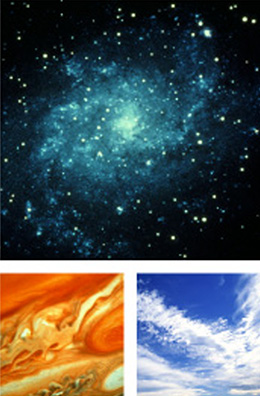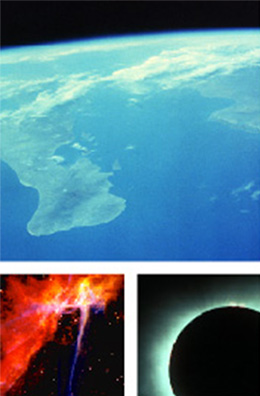Introduction of the Department

Many recent discoveries about the universe have prompted the formation of new paradigms, new disciplines, and new worldviews that transcend the boundaries of conventional physics, astronomy, planetary science, and Earth science. In this century, the formation of the largest structure in the universe by the smallest element of matter, the formation of various structures in the universe, the evolution and circulation of matter, and the extensive world woven by these elements are being elucidated in an organic and comprehensive manner.
At Hokkaido University, people with various specialties have been exploring and accumulating education and research on phenomena at various levels of nature ranging from elementary particles and atomic nuclei to celestial bodies and the universe, including planets and the Earth, structure formation, material evolution and cycles in the universe, and the fundamental laws governing these phenomena.
This department was newly established in 2006. The department aims to organically combine education and research in physics, astronomy, planetary science, and Earth science, and to conduct education and research in basic science that integrates observation, experiment, and theory. The department also aims to contribute to the development of human intellectual activities in the 21st century and to foster human resources with advanced basic knowledge who can play an active role in a wide range of fields in society.
Observational studies of the structure of galaxies and galactic systems, the nature of interstellar gas and star formation activity, and active galactic nuclei will be conducted using the 45-m radio telescope at NAOJ's Nobeyama Cosmic Radio Observatory, the Subaru optical/infrared telescope at Subaru Telescope in Hawaii, and the Very Long Baseline Radio Interferometry observation network in Japan.

Theoretical Particle & Cosmological Physics, Nuclear Physics, and Astrophysics
The goal of these labs is to study the phenomena related to elementary particles and atomic nuclei, which are the ultimate constituents of the universe, and to explore the origin of the universe and its constituent materials, as well as the fundamental laws governing the universe, in order to achieve a unified understanding of these phenomena and the fundamental laws that govern them.
Planetary and Space Group
Students will learn the history of material evolution and structure formation from the origin of the universe to the formation and structure of the earth and planets, and the birth of life, as well as the basic science and basic experiments that form the foundation of this history. Students will also develop the ability to induce and deduce the fundamental laws that govern natural phenomena involving various elementary processes.
Astrophysical Chemistry, and Phase Transition Dynamics
We will elucidate the formation mechanisms of molecules and organic materials in the cryogenic region of the universe (interstellar molecular clouds) from atomic-level experiments. We will also conduct experimental studies on the phase transition dynamics of ice, the most universal material in the terrestrial and planetary spheres.